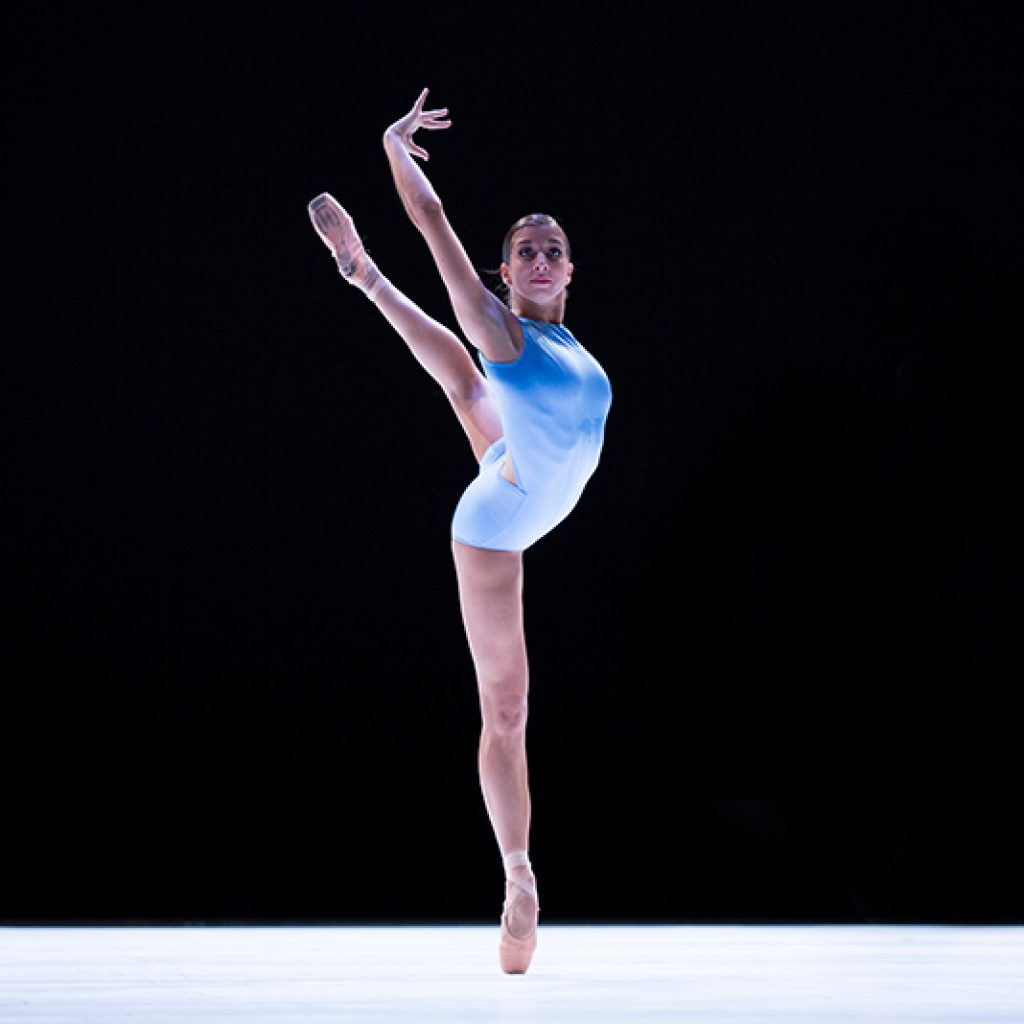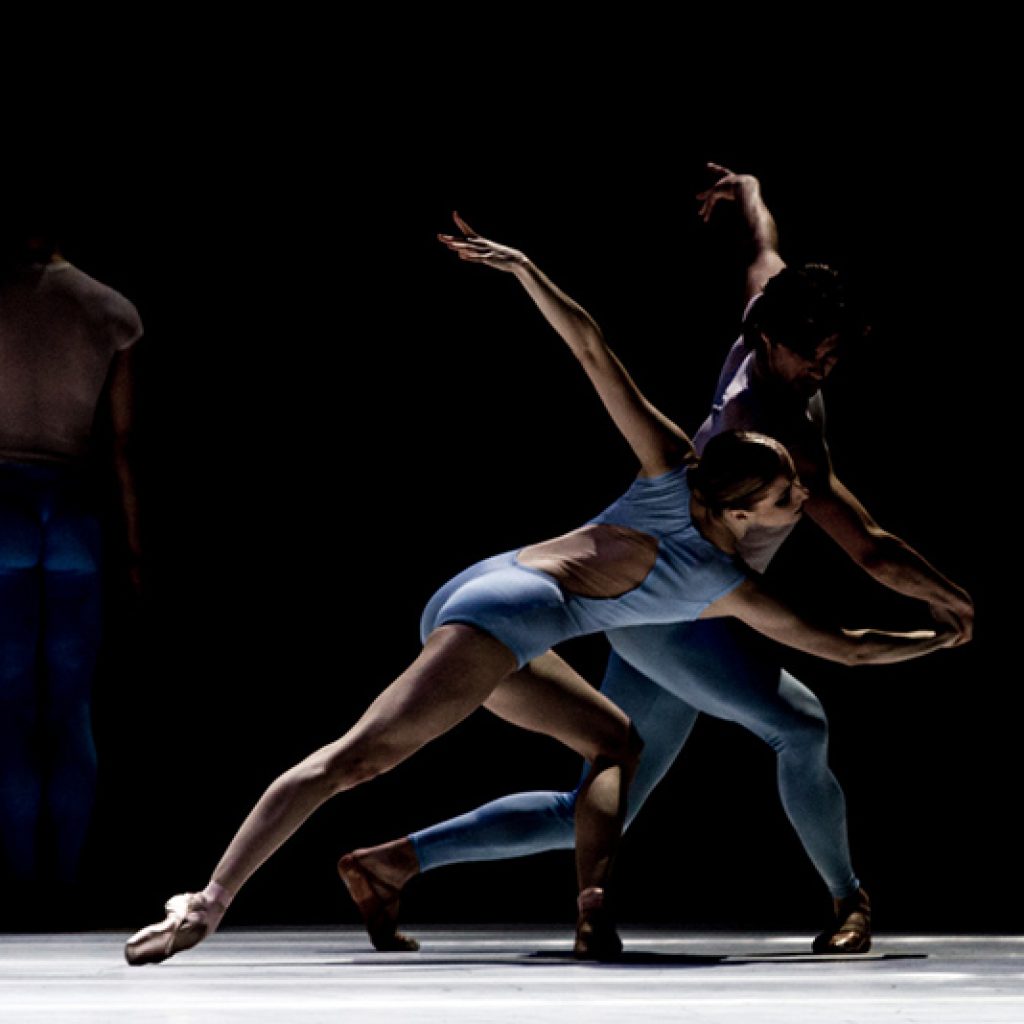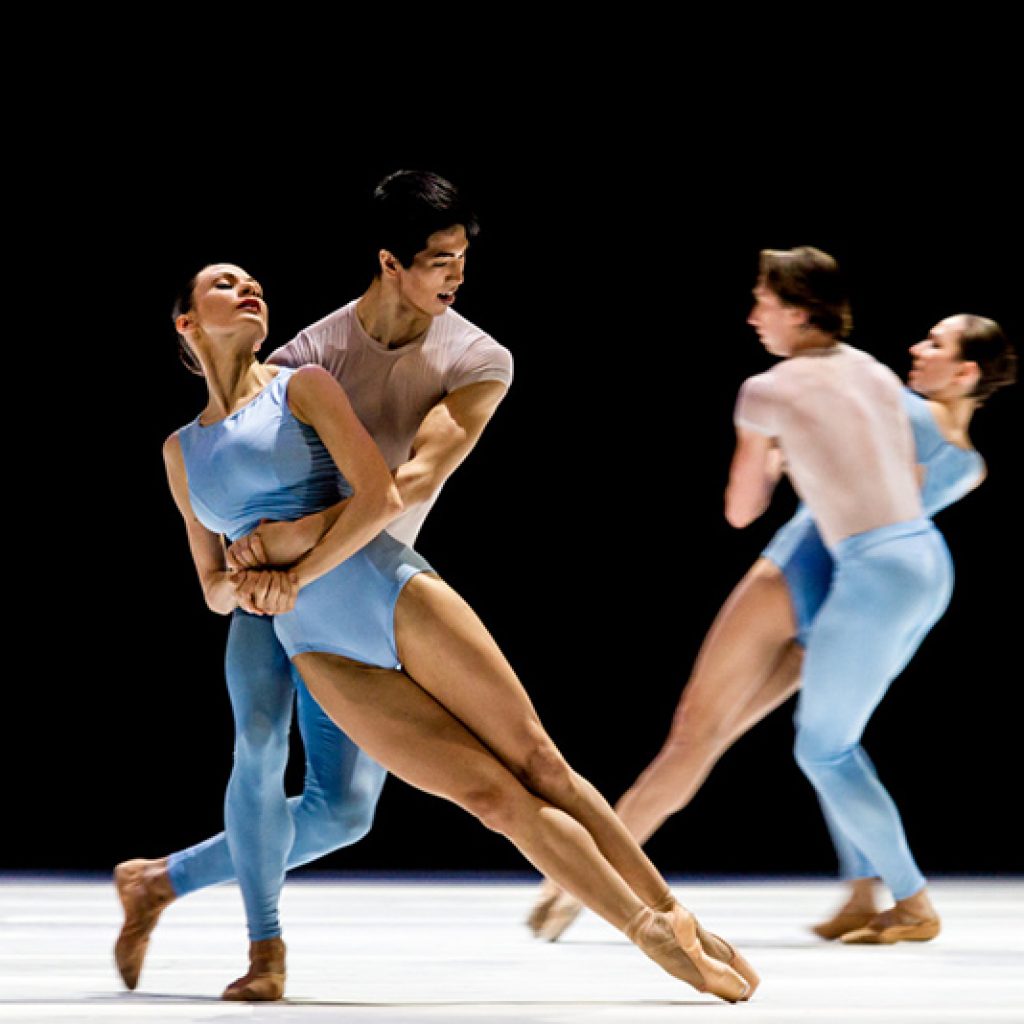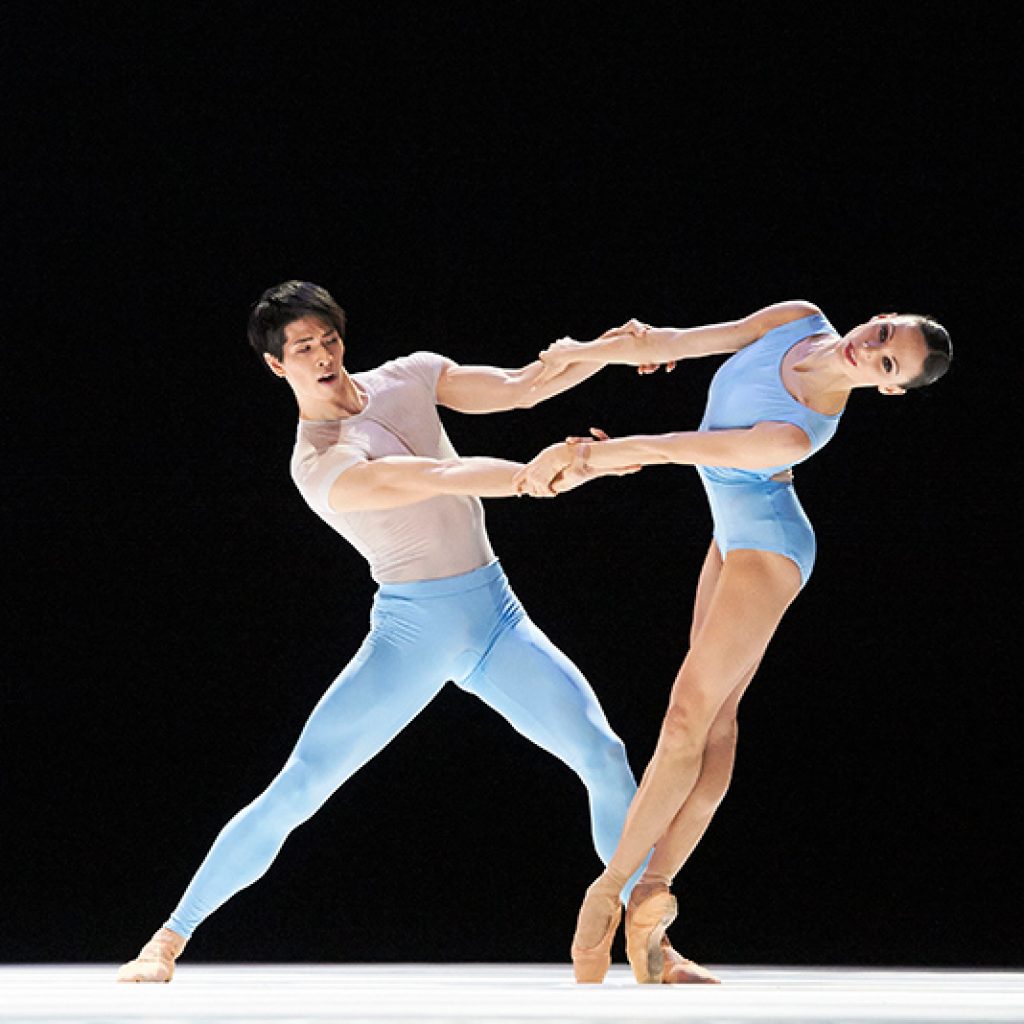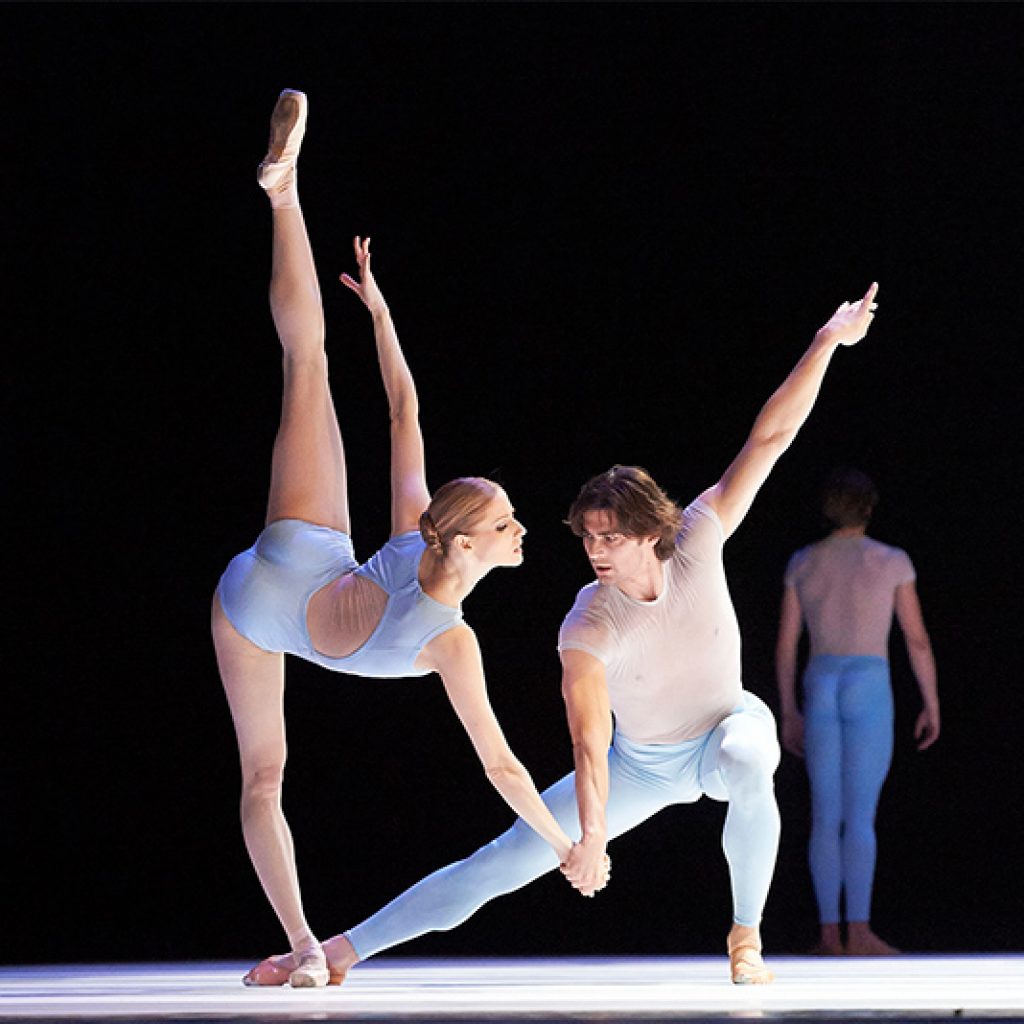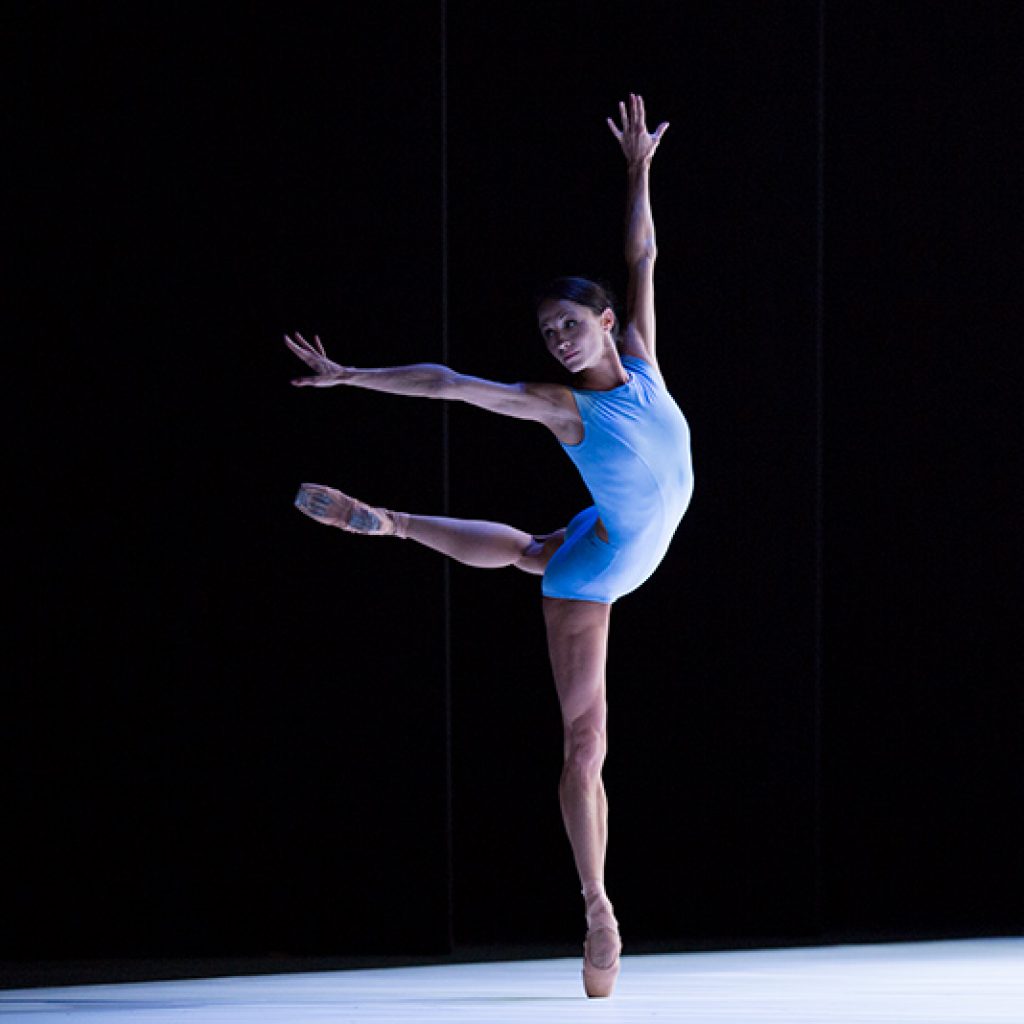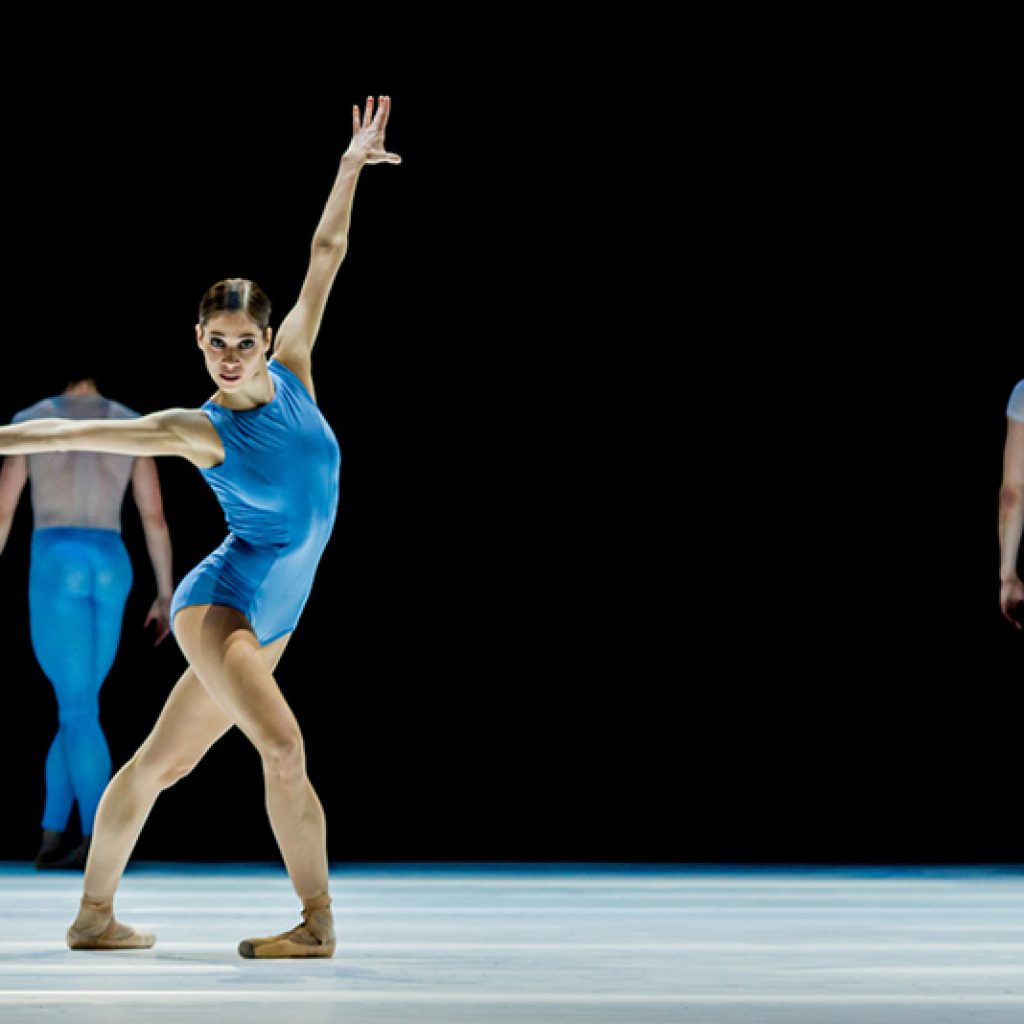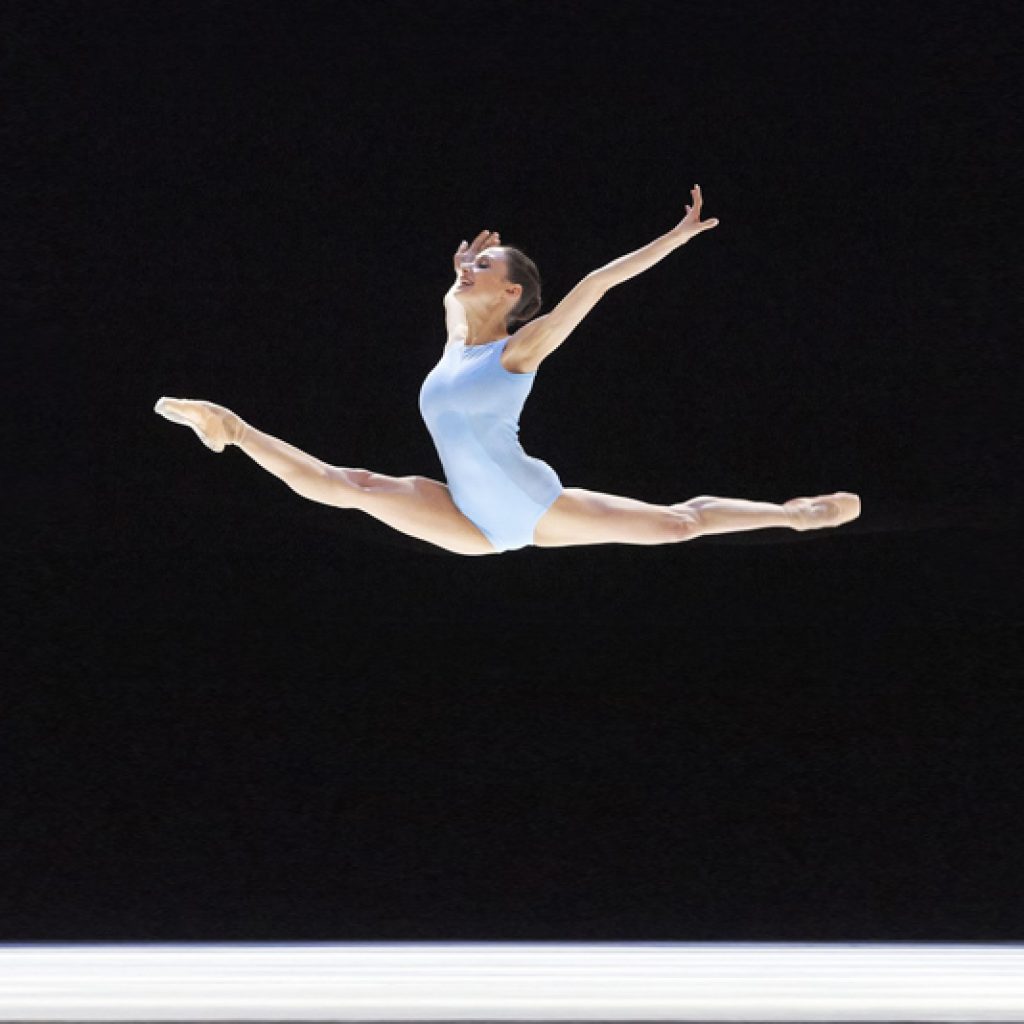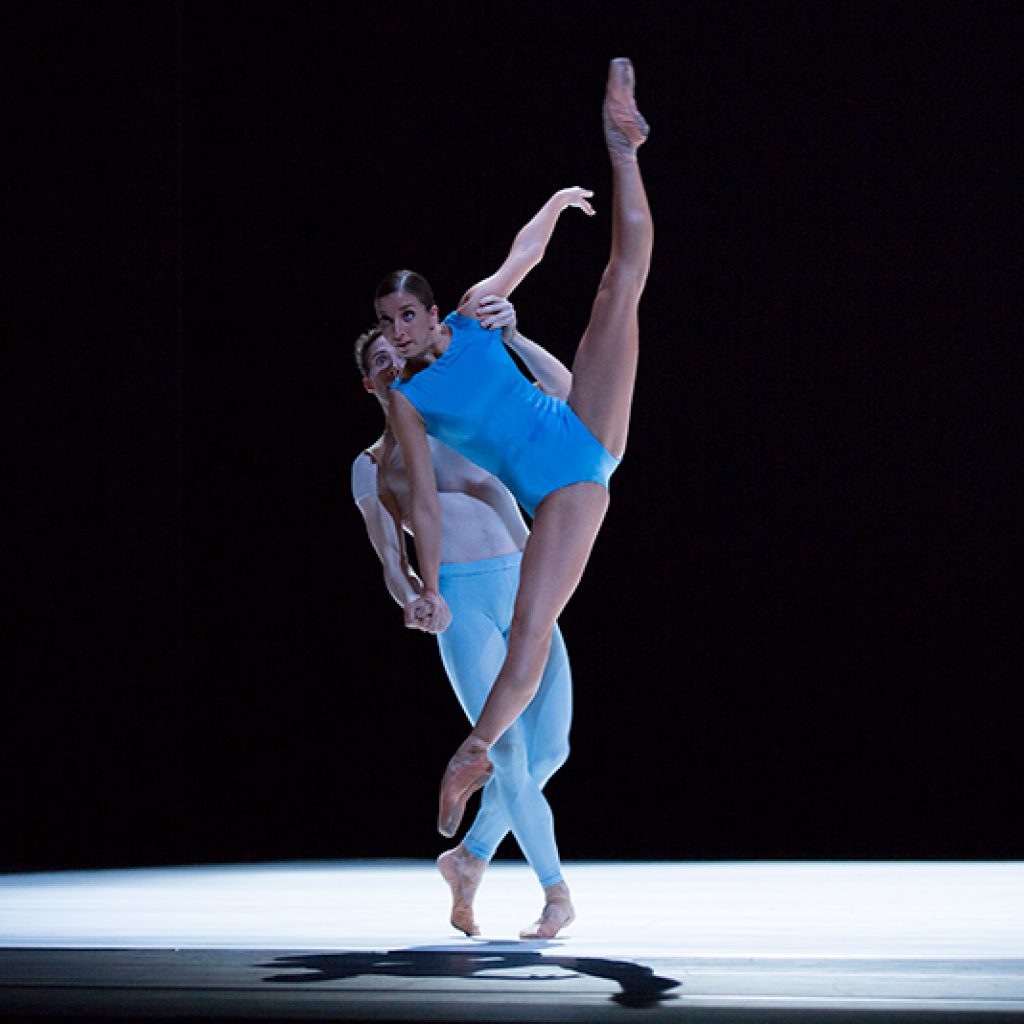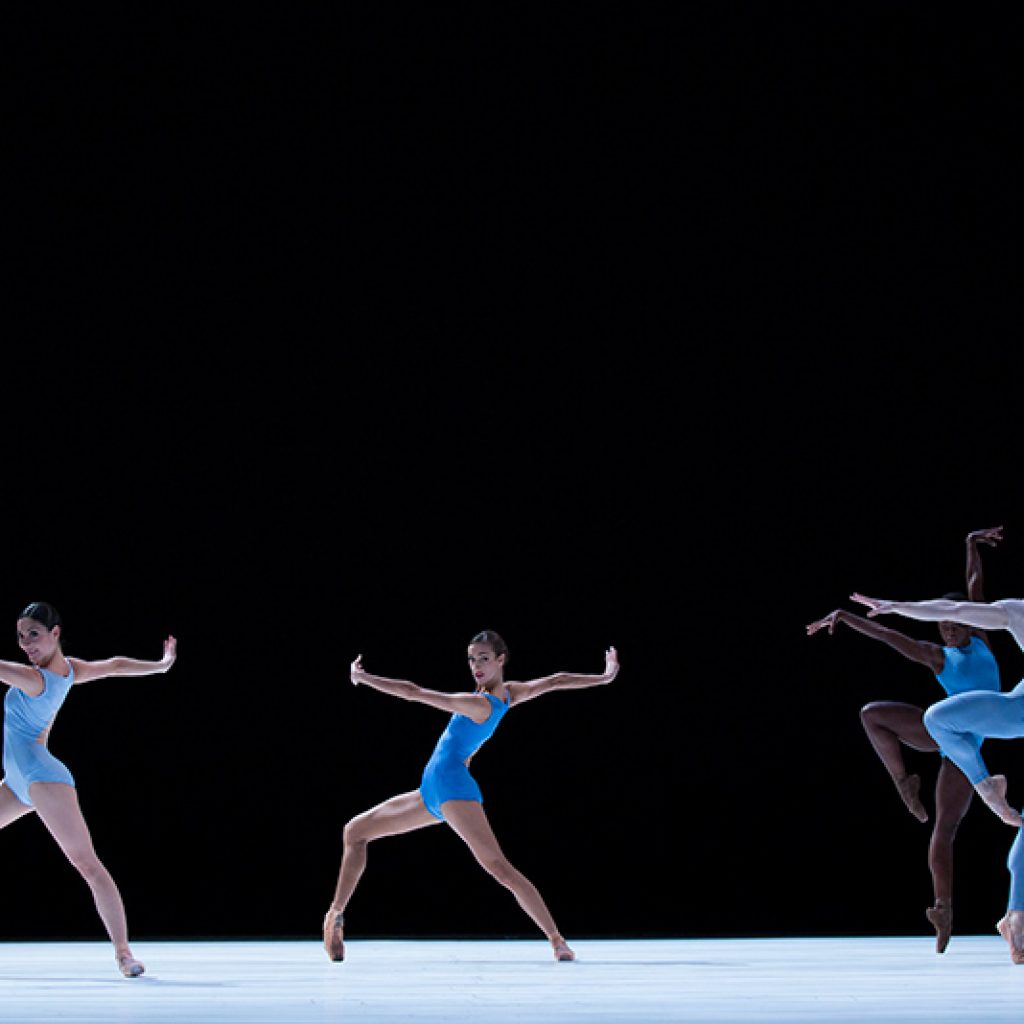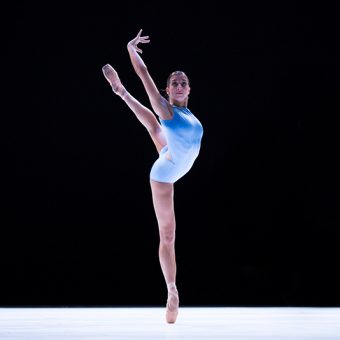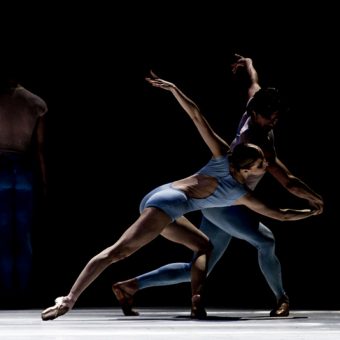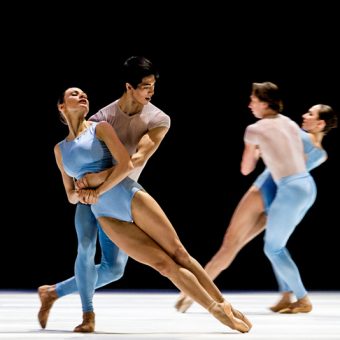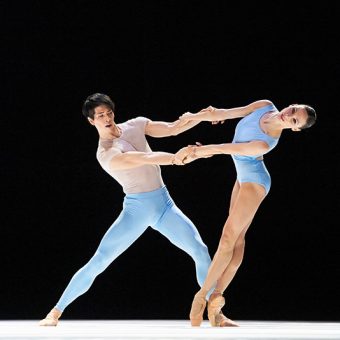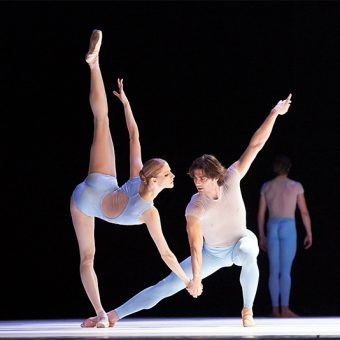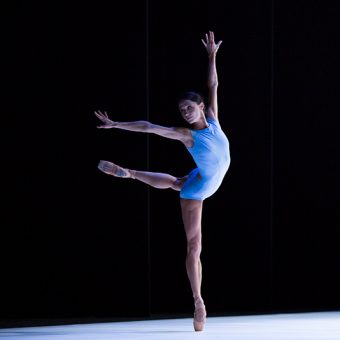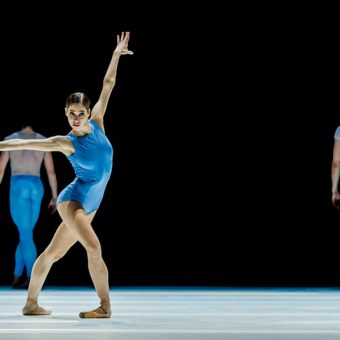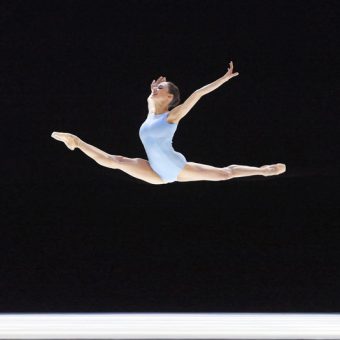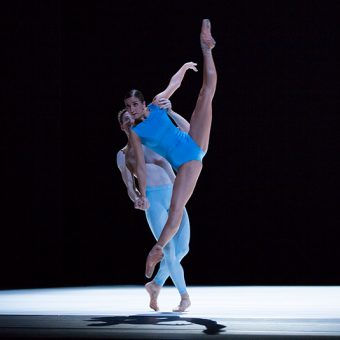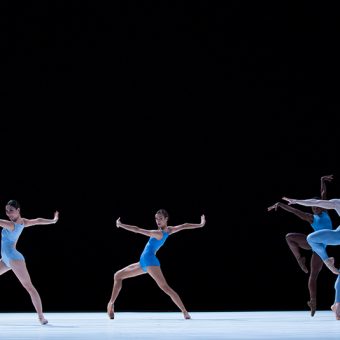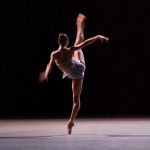A Million Kisses to my Skin
World première: 15 June 2000
Dutch National Ballet, Het Muziektheater, Amsterdam, The Netherlands
Choreography, Concept and Staging David Dawson
Music Johann Sebastian Bach
Set Design David Dawson
Costume Design Yumiko Takeshima
Light Design Bert Dalhuysen
Assistants to the Choreographer
Rebecca Gladstone / Tim Couchman /
Raphaël Coumee-Marquet / Rachel Beaujean
The exuberant post-classical A MILLION KISSES TO MY SKIN by David Dawson, is a dazzling work that succeeds in making Bach’s Piano Concerto No 1 in D minor sing. Originally created in 2000, as he was preparing to leave Dutch National Ballet, Dawson set out to pay tribute to what he had learnt as a classical dancer and to evoke the feeling of complete bliss a dancer sometimes experiences in their work. ‘I had it a couple of times on stage, and it feels just like that – a million simultaneous kisses to your skin. It was also a kind of my goodbye to my classical career, and it was important for me to create this piece using classical steps, but also to create a ballet that was about individuality and freedom.’
Dawson begins his creations by using the classical vocabulary, which he then tweaks and stretches into something else to create a totally 21st century work. ‘I wanted to create something that was structured in its own musicality,’ he says. ‘The concerto’s three movements reminded me of my whole experience as a dancer – a serious beginning and a definite ending. This was also a composition, which was just open to interpretation. I remember how wonderful it was simply to sit down and listen to the music, and work out what would happen where. It was like a firework display. When I looked at my notes afterwards, the pages were filled with ideas for different scenes which immediately corresponded to the music, and it then became a question of making the music visible.’
The choreography is an expansive, extravagantly free-flowing bravura vocabulary of movement, which sets aside the classical proprieties. Arms and legs are hyper-extended by both men and women, and asymmetry, off-centre turns, broken lines, swoops, dips and swirls are passed on from dancer to dancer as though they are sharing the sheer joy of movement. Bodies are flung in the air and swept into lifts, with the dancers in a continuously changing torrent. Dawson says he is looking for passion and the emotional side in his work, and for the sense of physical freedom. ‘I like things to be instinctive for the dancers, I want them to feel something. I like quality. It’s not about being perfect, it’s about achievement and effort. It’s about things like musicality and dynamic.’
The work is full of dynamic incidents, some traditional but many more experimental, with tight structures and carefully delineated lines. These carefully configured sequences are interspersed with virtuosic dancing to the more expressive cadenzas of the music. He says, ‘Creating a piece is a very personal event. I’m probably more attached to my ballets than I was to my ballet career which feels now like a period of training for what I do now. To learn what makes a step work, to learn the vocabulary of classical dance, to work with other choreographers. Now I have the opportunity to research and create my own ideas. It is such a privilege, and an incredibly liberating experience. What is hard is learning how to trust yourself, but as time goes by you often have no choice. Now I try to create works that I want to watch, something that will excite me. I try to be expressive, to use what I know, to try and encourage or direct dancers to be individual and fearless and enjoy dancing. To be big, enjoy their bones, to draw huge shapes with their limbs, and leave behind a three dimensional piece of art on stage when they are through.’
Along with the serene abstract music of Bach, which he chose for its rhythm and its darkness, this work can produce an ethereal spiritual experience. This is cerebral dancing of the highest quality in which classical form and contemporary ambiance are merged.



